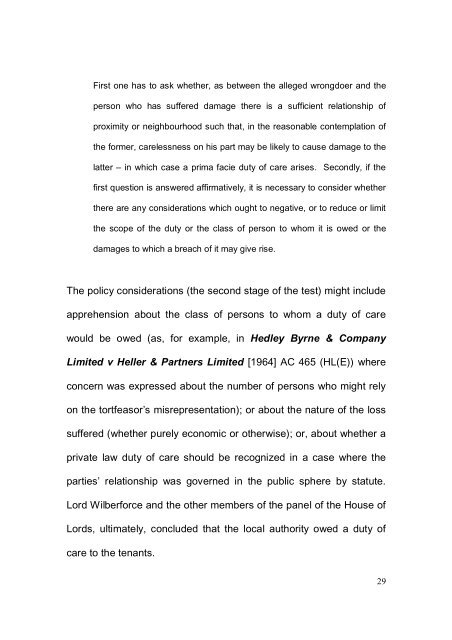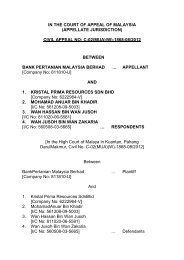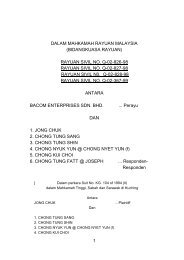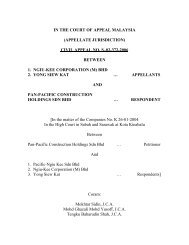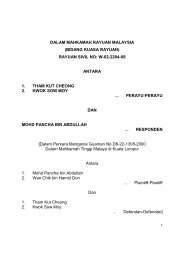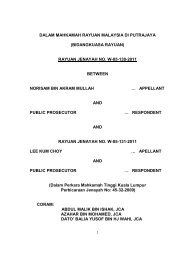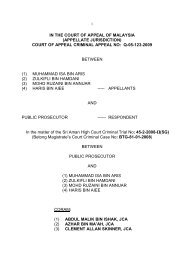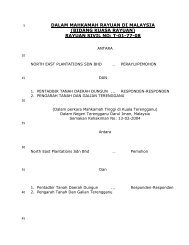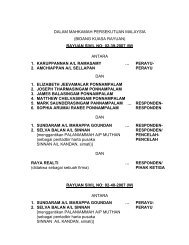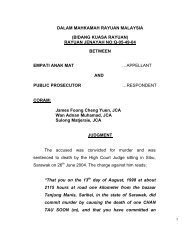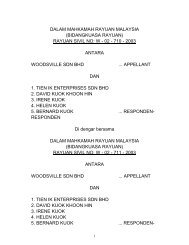THE PALACE OF JUSTICE CIVIL APPEAL NO. P-02-2074-2011 ...
THE PALACE OF JUSTICE CIVIL APPEAL NO. P-02-2074-2011 ...
THE PALACE OF JUSTICE CIVIL APPEAL NO. P-02-2074-2011 ...
You also want an ePaper? Increase the reach of your titles
YUMPU automatically turns print PDFs into web optimized ePapers that Google loves.
First one has to ask whether, as between the alleged wrongdoer and the<br />
person who has suffered damage there is a sufficient relationship of<br />
proximity or neighbourhood such that, in the reasonable contemplation of<br />
the former, carelessness on his part may be likely to cause damage to the<br />
latter – in which case a prima facie duty of care arises. Secondly, if the<br />
first question is answered affirmatively, it is necessary to consider whether<br />
there are any considerations which ought to negative, or to reduce or limit<br />
the scope of the duty or the class of person to whom it is owed or the<br />
damages to which a breach of it may give rise.<br />
The policy considerations (the second stage of the test) might include<br />
apprehension about the class of persons to whom a duty of care<br />
would be owed (as, for example, in Hedley Byrne & Company<br />
Limited v Heller & Partners Limited [1964] AC 465 (HL(E)) where<br />
concern was expressed about the number of persons who might rely<br />
on the tortfeasor’s misrepresentation); or about the nature of the loss<br />
suffered (whether purely economic or otherwise); or, about whether a<br />
private law duty of care should be recognized in a case where the<br />
parties’ relationship was governed in the public sphere by statute.<br />
Lord Wilberforce and the other members of the panel of the House of<br />
Lords, ultimately, concluded that the local authority owed a duty of<br />
care to the tenants.<br />
29


